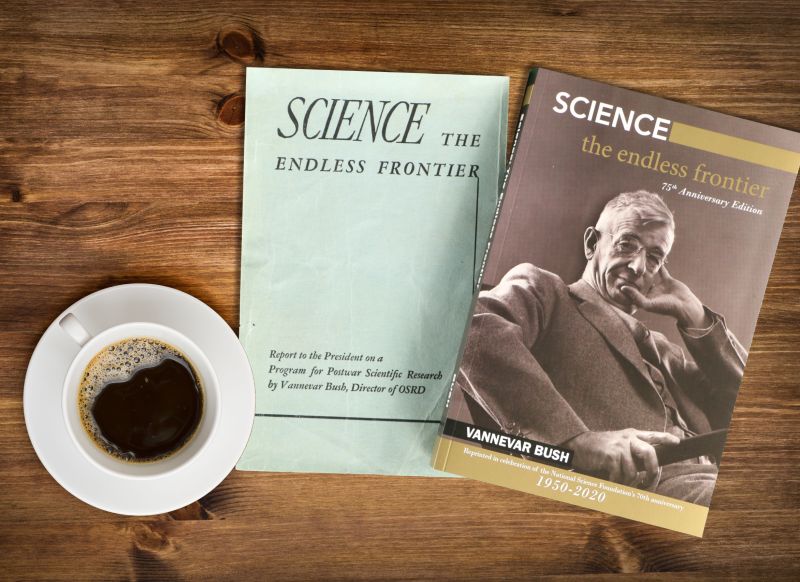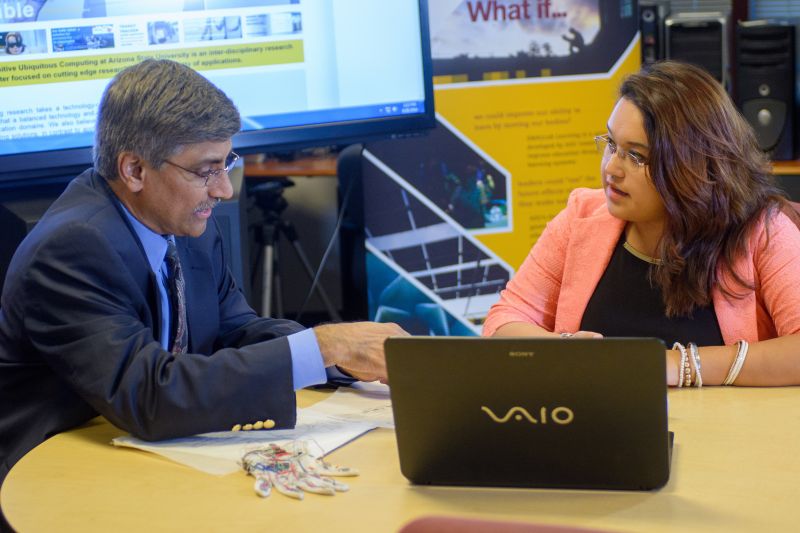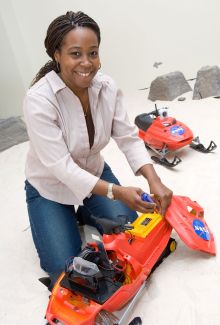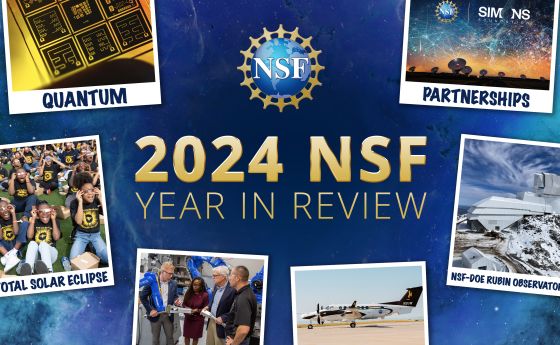
75 years on the endless frontier: a vision for the future rooted in the past
75 years ago, the White House made public Vannevar Bush’s vision for American prosperity that was based in government support for fundamental research. Today our director, Sethuraman Panchanathan, shares his vision for keeping Bush's legacy alive at NSF.
As the gears of war slowed, the din grew quiet. World War II was ending and Vannevar Bush recognized that the United States stood at a crossroads.
The MIT engineer and visionary had advised President Franklin D. Roosevelt on science during the war, heading a massive effort to harness American scientific talent for national defense. Making use of the largest federal investment in science and engineering research up to that point, scientists at universities, in industry, and government labs aligned to develop key scientific and technological advances to win the war.
Two diverging paths emerged. Either the U.S. could end its investment in science research and return to its prewar status of relying on fundamental advances in science from other countries. Or it could maintain its newly found position as global leader in S&E by continuing that investment into the postwar period and beyond. To Bush, the choice was clear.
Released to the public on July 19, 1945, Bush’s report to the president, Science -- The Endless Frontier, made the case for why the U.S. should continue its investment in fundamental science and engineering research. He argued for the creation of a new organization devoted to funding fundamental research—the National Science Foundation.
It is an honor to serve NSF as its 15th Director. My vision includes three pillars rooted in the legacy of our founding—maintaining global leadership, ensuring accessibility and inclusivity, and advancing the frontiers of research into the future.
Maintaining global leadership
Today, we are again at a crossroads.
As a result of its massive research and development investments during and after World War II, the U.S. has long been the global leader in R&D. But as the NSB Vision 2030 report explains, the global landscape is shifting. A dynamic international arena is taking shape, one characterized by interdependence and competition, where U.S. leadership is being challenged. The report details that, as of 2019, China has likely eclipsed the U.S. in terms of overall R&D spending.
But there is a particular area of leadership and national strength we must protect and bolster: our investment in basic and translational research. While global R&D spending has increased overall, the U.S. continues to outpace all other nations in basic research investment. This remains a key advantage, as the type of basic and translational research that NSF supports yields groundbreaking discoveries from surprising places and growth through targeted, strategic investments. Because NSF seeds basic research in all fields of science and engineering, it seeds discovery, the economy, and the future.
As Bush noted in 1945, federal investment in basic research is key to maintaining global leadership. He stated, "A nation which depends upon others for its new basic scientific knowledge will be slow in its industrial progress and weak in its competitive position in world trade."
Maintaining global leadership also means that the U.S. must lead with the principles of scientific integrity on which scientific advances depend. These research integrity principles are ones we all know well and value: openness, transparency, reciprocity, and merit-based competition. Science is global, and we need international partnerships to push the frontiers of science forward. Our world has changed since 1945, and new strategies for collaborating while ensuring security must be developed. As director, I will work with our partners in the U.S. Government, with the academic community, and with international partners to promote these principles and protect the U.S. research enterprise from the threat of improper foreign government interference while maintaining mutually-beneficial international collaboration.
Ensuring accessibility and inclusivity
When I founded the Center for Cognitive Ubiquitous Computing at Arizona State University, this is what I learned: Inclusivity leads to better outcomes. Researchers at the center use Artificial Intelligence and Machine Learning to empower people across the entire range of abilities. When you work with individuals who have differing abilities, you understand the hard problems that need to be tackled and you find solutions that help everyone. In this way, diversity enriches innovation to solve problems.
Assistive technologies enable us to overcome specific limitations. But more than that, they empower us to tap the unlimited capacities of the human spirit. They open our minds to innovation. And both the spirit of creativity and the innovative mindset are fundamental to economic prosperity and global competitiveness.
The best science is shaped by a wide range of perspectives and experiences that are informed by different cultural and racial backgrounds. For the U.S. to maintain global leadership through cultivating a robust science and engineering enterprise, accessibility and inclusivity in STEM must be a priority.
We must also inspire talent in every corner of our nation, from coast to coast, from the heartland and the sunbelt, to rural areas and the largest urban centers. We must empower role models at every level of leadership. We must pursue creative solutions to uplift talent and potential from all socioeconomic backgrounds. Let me be clear, I pledge that ensuring accessibility and inclusivity will be a cornerstone of my tenure, in all ways possible.
Advancing the frontiers of research
Part of Bush's legacy is partnership, and partnership is one of the best ways we can promote our ideals.
During wartime, different sectors of the S&E ecosystem worked together to apply scientific knowledge for technological innovations. Bush credited the government for coordinating and accelerating development—from lab to production—which occurred, as he explained, "in a fraction of the time it would have taken without such leadership." That's how the U.S. manufactured penicillin and anti-malarial medicines for troops during World War II.
NSF is a beacon for basic research. But partnerships can leverage research breakthroughs to accelerate progress and spark innovation to pursue different realms within basic research. From both academic and industry perspectives, when you approach complex problems—security and privacy in 5G, for example—you will encounter basic research problems. Lab-to-market pipelines are not necessarily linear. In other words, in the search for solutions to complex problems you often need to go back and address fundamental research challenges.
That's exactly what you see with NSF Innovation Corps, also known as I-Corps. I-Corps focuses on helping researchers nurture ideas, to bring them from the lab to the marketplace. Consider participant Ayanna Howard. She said I-Corps reframed her approach to research. I-Corps helped her to consider potential users in her work, ultimately putting educational technologies in the hands of children with severe disabilities. [Read more about Dr. Ayana Howard.]
To remain in the vanguard of scientific achievement, we must accelerate our S&T progress and investments. We’ll need to work with other agencies, with business and industry partners, private foundations and philanthropists, state and local governments to further our fundamental understanding of the world, to address grand challenges facing science and society, and to imagine new industries of the future.
75 years ago, Bush charted the course for America's S&E enterprise; partnerships and sustained federal investment paved it. And today, innovative researchers such as Ayanna Howard are blazing paths to the U.S. S&E enterprise of the future. By cultivating a culture of inclusivity in STEM that fosters an innovative mindset, we will confront daunting challenges and continue to expand the frontiers of science and engineering research, together—for the next 75 years and beyond.







